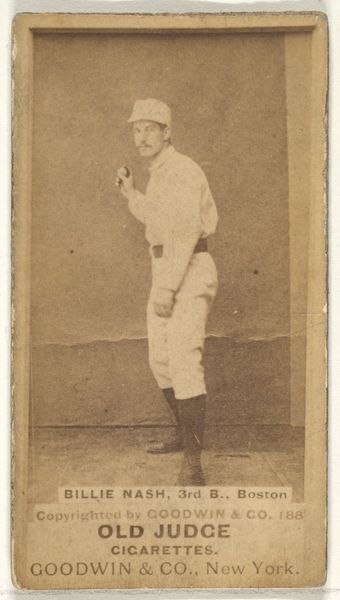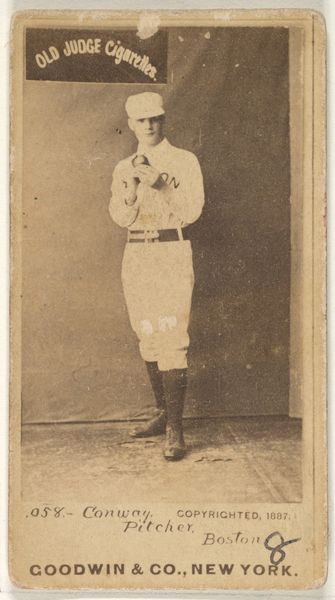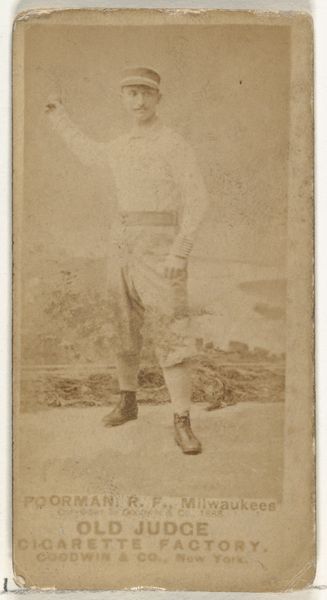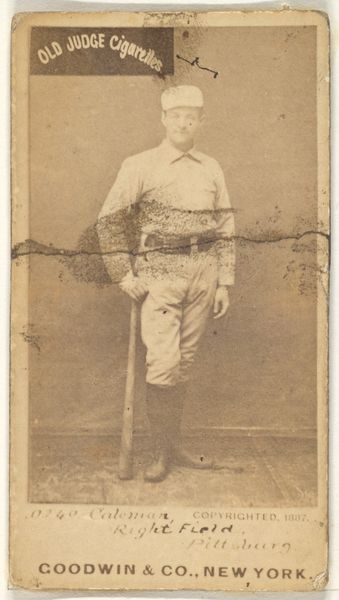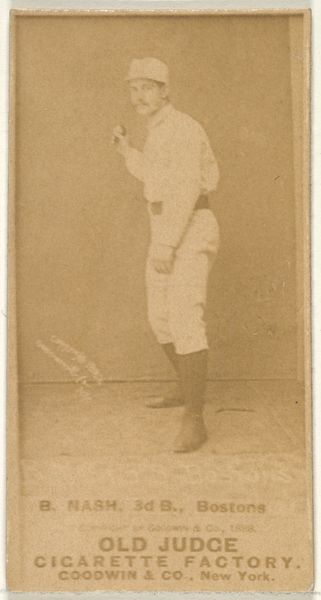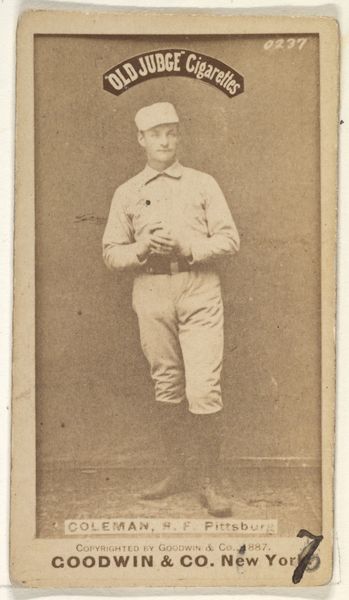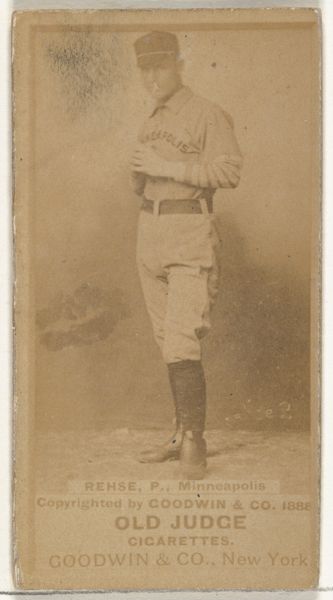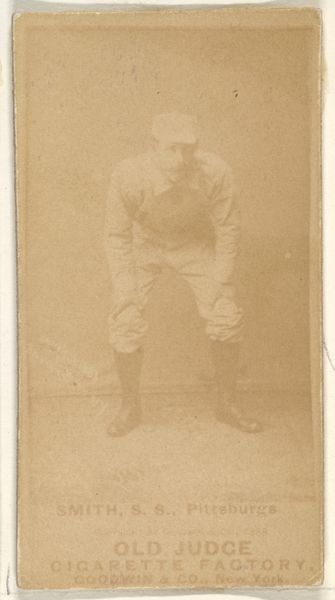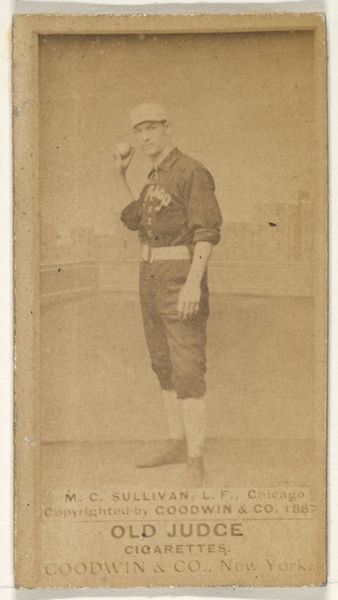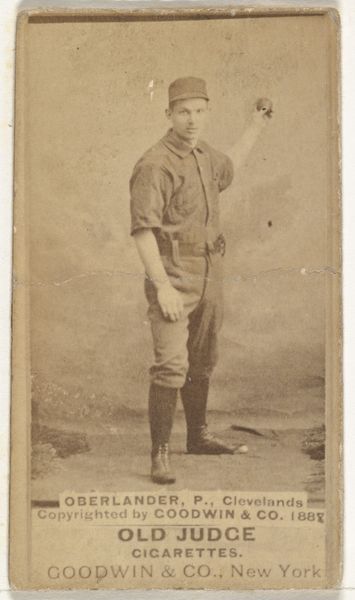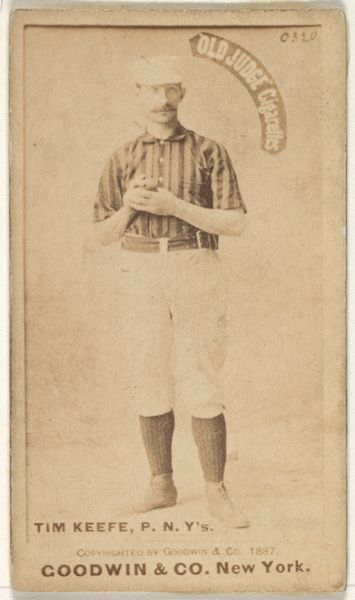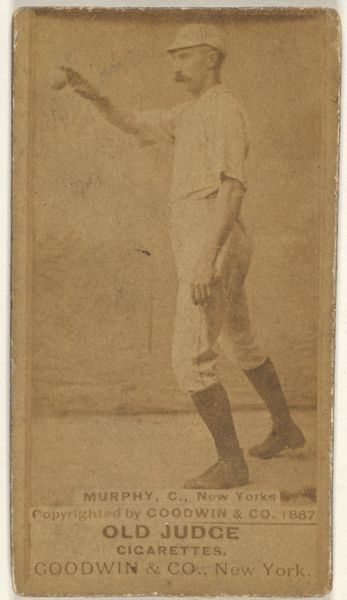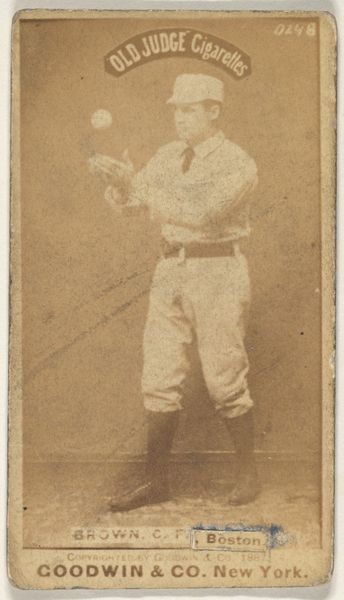
Nash, 3rd Base, Boston, from the Old Judge series (N172) for Old Judge Cigarettes 1887
0:00
0:00
print, photography, albumen-print
#
portrait
# print
#
baseball
#
photography
#
men
#
albumen-print
Dimensions: sheet: 2 11/16 x 1 3/8 in. (6.9 x 3.5 cm)
Copyright: Public Domain
Editor: This is "Nash, 3rd Base, Boston," an albumen print from 1887 by Goodwin & Company. What strikes me is the stark simplicity. It feels less like a celebration of athleticism and more like…well, an advertisement, almost clinical. What do you make of it? Curator: You’re right to pick up on that tension. It is both portraiture and advertisement. Consider the cultural landscape: baseball's rise coincided with mass consumerism. These cards, inserted into cigarette packs, democratized image ownership, previously limited to the wealthy. It also raises ethical questions, doesn't it? Linking athleticism to a harmful product… Editor: Definitely. So, it's not just about the sport, it’s about…access? Did these cards function as a kind of early media influencing how baseball players were perceived? Curator: Precisely! These cards were tools for constructing celebrity. Think about it: Goodwin & Company created and circulated this image; they controlled the narrative. The players became commodities in this exchange, promoting not just themselves but a product with potentially deadly consequences. Does this challenge the supposed “innocence” of the sport? Editor: Absolutely. It makes you wonder about the role of sports in society, then and now. It’s not just about the game, it's tied to so many other systems… advertising, fame… even our health. Curator: Exactly! And considering the era, with evolving ideas of masculinity, sports became associated with health and virility, which created an opportune marketing opportunity. Editor: I'm beginning to understand how an image like this offers a complex commentary about its time! It is definitely more than a baseball card. Curator: Yes. Thinking critically about these kinds of artworks urges us to analyze their role in the interplay between consumerism, identity formation and popular culture.
Comments
No comments
Be the first to comment and join the conversation on the ultimate creative platform.
